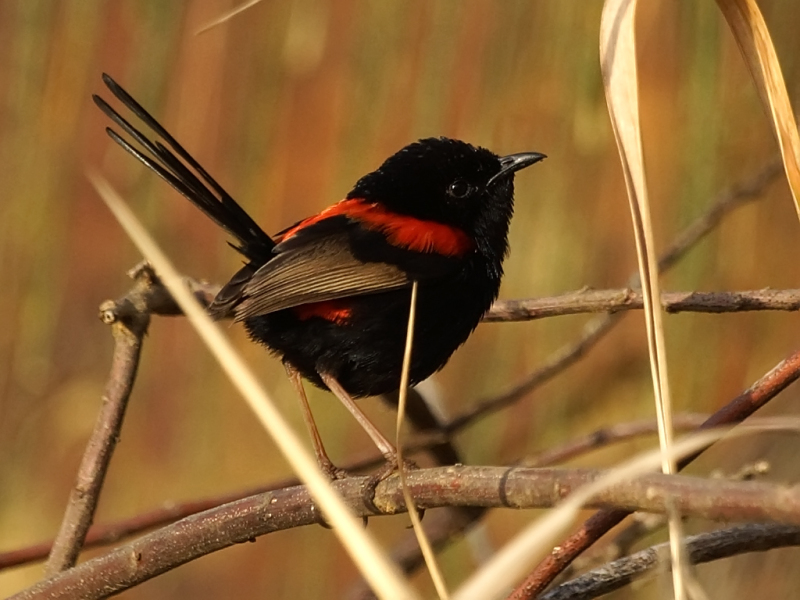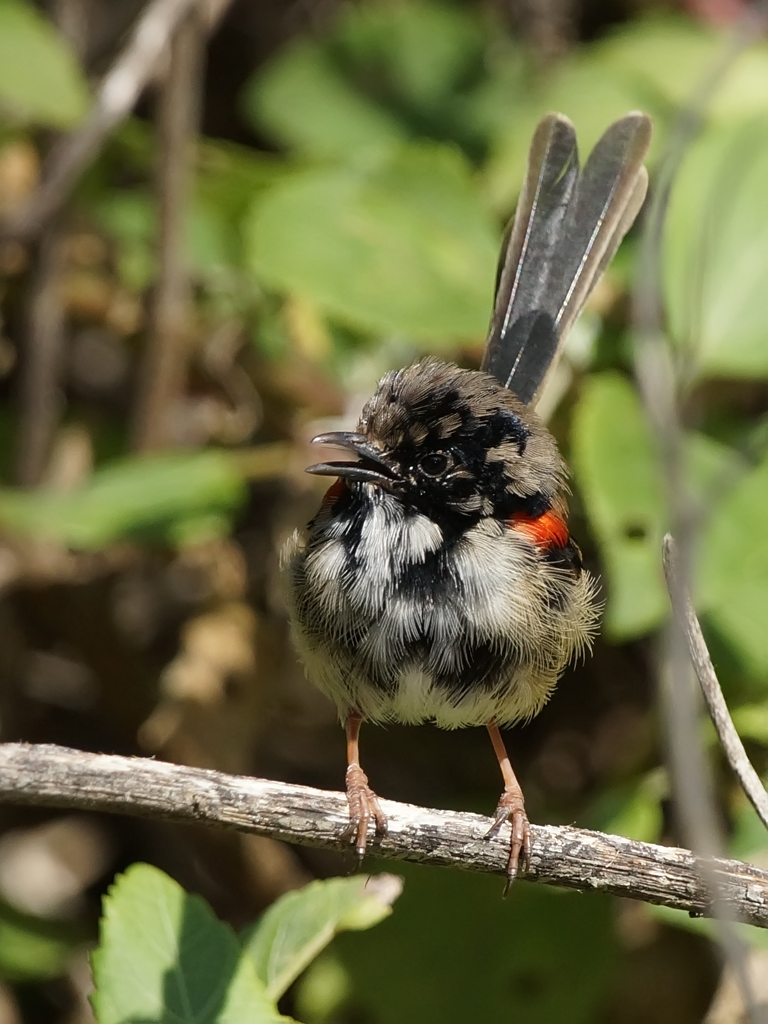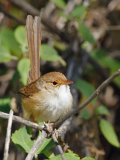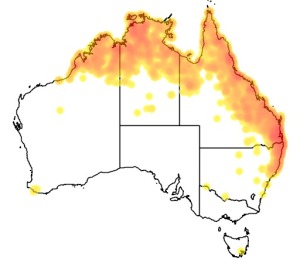Colours
Distinguishing features
The 6 cm long tail is black in the breeding male, and brown in eclipse males, females and juvenile birds.
The bill is relatively long, narrow and pointed and wider at the base.
The male adopts full breeding plumage by the fourth year, later than all other fairywrens apart from its relative the White-winged Fairy-wren.
The male in breeding plumage has a black head and body with striking red back and brown wings. At other times it has a brown upper body and white underparts. Some, mainly younger, males do remain in eclipse plumage while breeding.
The female looks remarkably similar with a buff brown body and a yellowish spot under the eye. The female of this species differs from those of other fairy wren species in that it lacks a blue tint in the tail.
Juveniles of both sexes look very similar to females. (Wikipedia)
Size
- Up to 11.5 cm (Length of specimen)
Wingspan
- Wingspan data is not yet available.
Synonyms
Distribution
Distribution and habitat preferences
It is endemic to Australia and can be seen along rivers and the coast from Cape Keraudren in northern Western Australia through the Kimberleys, Arnhem Land and the Gulf Country and into Cape York, with the Selwyn Range and upper reaches of the Flinders River as a southern limit. It is also found on the nearby offshore islands Groote Eylandt, Sir Edmund Pellew, Fraser, Melville and Bathurst Islands. It then occurs all the way down the east coast east of the Great Dividing Range to the Hunter River in New South Wales, preferring wet, grassy tropical or sub-tropical areas, with tall grasses such as bladygrass (Imperata cylindrica), species of Sorghum, and Eulalia.
Diet
It is predominantly insectivorous; eating a wide variety of insects, including beetles such as weevils, leaf-, jewel-, flea- and ground-beetles, bugs, grasshoppers, moths, wasps and cicadas. Insect larvae and eggs are eaten as well as spiders. Seeds and other plant material make up only a very small proportion of its diet.
It can be found hunting for insects in leaf litter, shrubbery and on the edges of bodies of water, mostly in the morning and late afternoon. (Wikipedia)




